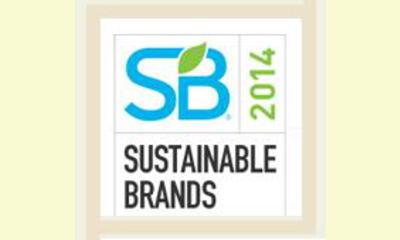|
|
Hershey Says It Will Meet or Exceed All 2015 Sustainability Targets
an article by Mike Hower, Sustainable Brands
Hershey has released its most recent corporate
social responsibility (CSR) Scorecard, which
reflects substantial progress on a range of
sustainability programs and new initiatives over
the past year.

click on photo to enlarge
The company says it is on track to meet or exceed
all of its 2015 sustainability targets set forth
in its last full CSR Report. The latest scorecard
is organized around programs and initiatives in
four key areas of social responsibility:
Marketplace, Environment, Workplace and Community.
Some notable achievements Hershey has highlighted
include:
Reduced Water Usage — Hershey has cut its
normalized water consumption in manufacturing
operations by 58 percent from 2009 to 2012. The
company says this reduction was the result of a
large cross-functional effort to conserve water
and conduct third-party audits of water use. The
audits led to installation of water conservation
measures, combined with the transfer of
manufacturing from the 19 East plant to the highly
water-efficient West Hershey plant.
Sustainable Palm Oil — In 2011, Hershey committed
to purchasing 100 percent Roundtable on
Sustainable Palm Oil (RSPO)-certified palm oil by
2015. In an effort to reduce Hershey’s impact on
sensitive rainforests and other natural resources,
the company is accelerating its plans and all palm
oil purchased by the company will be RSPO
certified by the beginning of 2014, one year
earlier than its original commitment.
Zero Waste to Landfill (ZWL) Manufacturing —
Hershey has increased fivefold the number of
manufacturing plants that have achieved ZWL status
and is working towards attaining this status at
several other sites. The company’s East Coast
Distribution Center and Hershey’s Chocolate World
Attraction have also achieved ZWL status, bringing
the total number of Hershey facilities operating
as ZWL to seven.
One-Hundred Percent Certified Cocoa Commitment —
Hershey pledged to source 100 percent third-party
certified cocoa for all of its chocolate products
worldwide by 2020. This includes moving to 100
percent certified cocoa for the Scharffen Berger
brand by the end of 2013 and for the Hershey’s
Bliss chocolate brand in 2012.
The report also highlights such accomplishments as
Hershey’s 21st Century Cocoa Plan to help some
750,000 cocoa farmers grow sustainable crops and
Project Peanut Butter to fund a manufacturing
plant in Ghana that makes and distributes vitamin-
enriched nutritional packets to malnourished
children.
Hershey has received much external recognition,
including being selected for the Dow Jones
Sustainability Index, ranking #7 in the Food and
Beverage section of America’s 100 Best Corporate
Citizens, making the Bloomberg Civic 50 list and
topping the 2012 CoreBrand BrandPower Rankings.
“Our commitment to citizenship is fundamental to
our business strategy and global growth and we
continue to make progress on all fronts,” said
John P. Bilbrey, President and Chief Executive
Officer, The Hershey Company. “We are continuing
the legacy of our founder, Milton Hershey, who
believed that it was the company’s obligation to
‘do well by doing good’ in society.”
[Note: Thank you to Janet Hudgins, the CPNN
reporter for this article.]
|








|
DISCUSSION
Question(s) related to this article:
How can polluting industries be made responsible?, Can this be done without government intervention?
* * * * *
Latest reader comment:
In her article Julia Millstein suggests that we go to www.uspirg.org and find out how your government is affecting our life, and find out how to defend our right to healthy forests, sustainable economy, and clear air.

|
|









